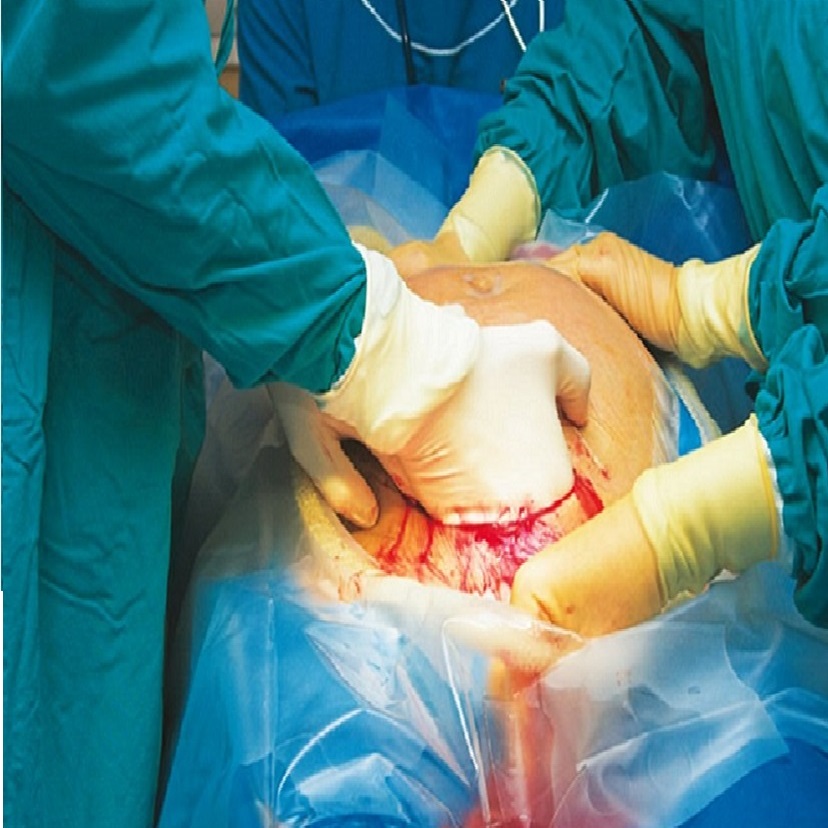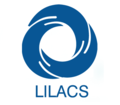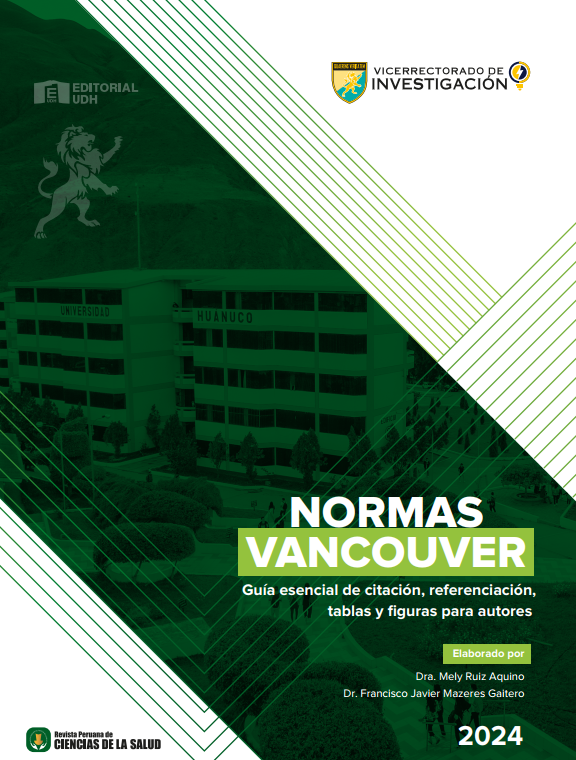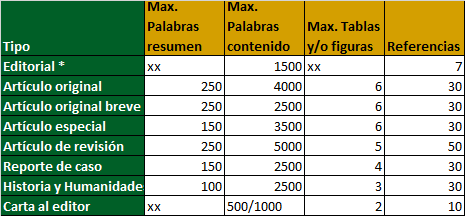Frequency and indications of elective and emergency cesarean sections in the Hospital Regional de Ayacucho, Peru
DOI:
https://doi.org/10.37711/rpcs.2021.3.1.264Keywords:
cesarean section, hysterotomy, frequency, indications, hospitalAbstract
Objective. To determine the frequency and indications of elective and emergency caesarean sections in relation to associated factors in the Hospital Regional de Ayacucho. Methods. A basic research of non-experimental, descriptive, cross-sectional, prospective, correlational design with a quantitative approach was carried out, with a non-probabilistic and intentional sample of 94 post-cessation puerperal women, with prior informed consent. The survey technique was used for data collection, and the questionnaire and medical records were used as instruments to investigate the reason for cesarean section. In the inferential analysis, the chi-square test was used at 95% confidence . Results. 51.8% (1455) of deliveries were by cesarean section, the most frequent indications being previous cesarean section with 17.2% of cases, cephalopelvic disproportion with 13.7%, oligohydramnios with 11.3% and others in lower percentages; likewise, 59.6% of cesarean sections were emergency and 40.4 % elective. There is no significance p > 0.05 between cesarean sections and the factors parity, maternal age and socioeconomic status. Conclusions. The frequency of cesarean sections exceeds 50%, with the first indications being previous cesarean section, cephalopelvic disproportion, oligohydramnios and acute fetal distress. The most common types of cesarean section are emergency and elective. There is no significance between cesarean sections and parity, maternal age and socioeconomic status.
Downloads
References
1.Sanches NC; Mamede FV, VIVANCOS RBZ. Perfil Perfil das mulheres submetidas à cesareana e assistência obstétrica na maternidade pública em Ribeirão Preto. Texto con-texto - enfrem [Internet].2012;21(2):418-426 [Consultado 2021 Ene 31] Disponible en https://doi.org/10.1590/S0104-07072012000200021.
2.Anaya A, Londoño F, Pérez L, Ortiz R. Caracterización delas pacientes llevadas a cesárea según modelo de Robson y exploración de factores asociados en gestantes atendi-das en el hospital Universitario San José de la ciudad de Popayán-Colombia. 1 de enero de 2016 a 30 de junio de 2016. Rev chil Obs ginecol [Internet]. 2017; 82(5): 491-503 [Consultado 2021 Feb 4] Disponible en: https://scielo.conicyt.cl/scielo.php?pid=S0717-75262017000500491&s-cript=sci_arttext&tlng=e
3.Hiralda J, Pérez A, Velázquez V. Comportamiento de lacesárea en pacientes del Hospital Vladimir Ilich Lenin de Holguín. Correo Científico Médico de Holguín [Internet]2015; 19(4): 615-27 [Consultado 2021 Feb 4] Disponibleen: http://scielo.sld.cu/pdf/ccm/v19n4/ccm03415.pdf
4.Martínez-Salazar G, Grimaldo-Valenzuela P, Vázquez-Peña G, Reyes-Segovia C, Torres-Luna G, Escudero-Lourdes G. Operación cesárea. Una visión histórica, epidemiológica y ética para disminuir su incidencia. Rev Med InstMex Seguro Soc [Internet].2015; 53(5): 608-615 [Consul-tado 2021 Feb 4];.Disponible en: https://www.redalyc.org/pdf/4577/457744939018.pdf
5.Sinchitullo-Castillo A, Roldán-Arbieto L, Arango-Ochan-te P. Factores asociados a partos por cesáreas en unHospital Peruano. Rev Fac Med Hum [Internet].2020;20(3):444–51 [Consultado 2021 Feb 6] Disponible en:http://www.scielo.org.pe/pdf/rfmh/v20n3/2308-0531-rfmh-20-03-444.pdf
6.Ortiz RA, Moreno E, Mambuscay J, Muñoz J. Prevalenciade complicaciones en pacientes sometidas a cesárea enel periodo comprendido entre enero a diciembre del2016 en el Hospital Universitario San José de Popayán,Colombia 2016. Rev chil Obs ginecolol [Internet].2019;84(6):435–48 [Consultado 2021 Feb 4].Disponible en: https://scielo.conicyt.cl/scielo.php?script=sci_arttext&pi-d=S0717-75262019000600435
7.OMS. Declaración de la OMS sobre tasas de cesáreas[Internet]. Ginebra; 2015 [Consultado 2021 Ene 12]Disponible en: https://apps.who.int/iris/bitstream/handle/10665/161444/WHO_RHR_15.02_spa.pdf;jses-sionid=E0405BAD0C428FABF721B17A48ED7A1B?sequence=1
8.Hernández J, Martínez F, Mojena Y. Caracterizaciónde cesáreas primitivas en Santa Cruz del Norte. RevCubana Obstet Ginecol [Internet]. 2017; 43(3):66-79 [Consultado 2021 Feb 4] Disponible en: http://scielo.sld.cu/scielo.php?script=sci_arttext&pi-d=S0138-600X2017000300007
9.Zuleta-Tobon J, Quintero-Rincón F, Quiceno-Ceballos A.Aplicación del modelo de Robson para caracterizar larealización de cesáreas en una institución de tercer nivel de atención en Medellín, Colombia: Estudio de corte transversal. Rev Colomb Obstet Gineco [Internet]. 2013;64(2): 90-99 [Consultado 2021 Ene 21] Disponible en:http://www.scielo.org.co/scielo.php?script=sci_abstrac-t&pid=S0034-74342013000200002&lng=en&nrm=iso&tlng=es
10.Nápoles CD, Piloto-Padrón M. Consideraciones actualessobre la operación cesárea. MEDISAN [Internet]. 2012;16(10):1595 [Consultado 2021 Feb 4] Disponible en:http://scielo.sld.cu/scielo.php?script=sci_arttext&pid=S1029-30192012001000013
11.Bobadilla LE, León F. En torno a las cesáreas en el Perú:¿solo un problema de cifras? Rev Peru Ginecol [Internet]. 2017; 63(4):659–60 [Consultado 2021 Feb 4] Disponibleen: http://www.spog.org.pe/web/revista/index.php/RPGO/article/view/2044
12.Suárez-López L, Campero L, De la Vara-Salazar E, Rivera-Rivera L, Hernández-Serrato M, Walker D, et al. Características sociodemográficas y reproductivas asociadascon el aumento de cesáreas en México. Salud PublicaMex [Internet]. 2013; 55(2):S225–34 [Consultado 2021Feb 4];. Disponible en: http://www.scielo.org.mx/pdf/spm/v55s2/v55s2a20.pdf
13.Puma J, Díaz J, Caparó C. Complicaciones maternas dela cesárea en gestantes a término en periodo expulsivoen un hospital general de Lima, Perú. Rev Med Hered[Internet].2015; 26(1):17–23 [Consultado 2021 Feb 4]Disponible en: http://www.scielo.org.pe/scielo.php?pid=S1018-130X2015000100004&script=sci_arttext&tln-g=en
14.Sadler M. Los efectos de la cesárea en la salud in-fantil: Un asunto urgente. Rev chil pediatr [Internet]. 2018; 89(4):561–2 [Consultado 2021 Feb 4]Disponible en: https://scielo.conicyt.cl/scielo.php?pi-d=S0370-41062018000400561&script=sci_arttext&tlng=en
15.Uzcátegui O, Cabrera C. Aspectos bioéticos de la cesárea y consentimiento informado. Rev Obs Ginecol Venez [Internet].2010; 70(1):47–52 [Consultado 2021 Feb 4]Disponible en: http://ve.scielo.org/scielo.php?script=sci_arttext&pid=S0048-77322010000100009
16.Vázquez J. Abuso de la operación cesárea y el princi-pio de beneficencia. rev.latinoam.bioet [Internet].2015;16(1): 60-71 [Consultado 2021 Feb 4] doi: http://dx.doi.org/10.18359/rlbi.1441
17.Morgan-Ortiz F, Luna-Hernández K, Peraza-Garay F,Morgan-Ruiz F, Martínez-Román J, Corona-Sapien C, etal. Frecuencia de las indicaciones de operación cesárea de acuerdo con la clasificación de robson. Rev MedUAS [Internet]. 2018; 8(1):20-30 [Consultado 2021 Ene20];. Disponible en: http://dx.doi.org/10.28960/revme-duas.2007-8013.v8.n1.003
18.Luque AS. Indicaciones y tasa de cesáreas en el Hospital EsSalud III Puno en el año 2016 [Internet]. Puno: Universidad Nacional del Altiplano; 2017 [Consultado 2021Ene 14]. Disponible en: http://repositorio.unap.edu.pe/bitstream/handle/UNAP/3851/Luque_Coyla_Alexander_Salvio.pdf?sequence=1&isAllowed=y
19.Vallejos A, Espino S, Jaimes L, Zepeda C, Cabrera DA,Arriaga L, et al. Actitudes de los obstetras sobre el parto por cesárea: un estudio en hospitales de la ciudadde México. Perinatol Reprod Hum [Internet]. 2018;32(1):19–26 [Consultado 2021 Feb 4] Disponible en:https://www.sciencedirect.com/science/article/pii/S0187533718300359
20.Quispe A, Santivañez-Pimentel Á, Leyton-Valencia I, Po-masunco D. Cesáreas en siete hospitales públicos deLima: análisis de tendencia en el periodo 2001-2008.Rev perú med exp salud publica [Internet] 2010; 27(1):45-50 [Consultado 2021 Ene 21] Disponible en: http://www.scielo.org.pe/scielo.php?script=sci_arttext&pi-d=S1726-46342010000100008
21.Rosado-Gorocica JD, Montoya-López S, Dzul-Rosado KR, Zavala-Castro JE, Puerto FI. Frecuencia, indicaciones yconocimiento de embarazadas sobre la cesárea: El casode un hospital de la ciudad de Mérida, Yucatán. Rev bio-med [Internet] 2013; 24(3):100–108 [Consultado 2021 Ene 31] Disponible en: https://www.revistabiomedica.mx/index.php/revbiomed/article/view/62
22.Betrán AP, Ye J, Moller A-B, Zhang J, Gülmezoglu AM,Torloni MR. La tendencia creciente en las tasas de cesárea: estimaciones mundiales, regionales y nacionales:1990-2014. Zeeb H, editor. PLoS One [Internet] 2016;11(2):e0148343 [Consultado 2021 Ene 27] Disponibleen: https://doi.org/10.1371/journal.pone.0148343
23.Perú. Instituto Nacional de Estadística e Informática. Encuesta demográfica y de salud familiar – ENDES 2017.Nacional y Departamental [Internet] [Consultado 2021Feb 2] Disponible en: https://www.inei.gob.pe/media/MenuRecursivo/publicaciones_digitales/Est/Lib1525/index.html
24.Fonseca-Pérez JE. Cesárea por solicitud materna (CPSM). Rev Colomb Obstet Ginecol [Internet].2017;68(1):7-11.[Consultado 2021 Feb 2] Disponible en: https://www.redalyc.org/pdf/1952/195250686001.pdf
25.Hernández R, Fernández C, Baptista P. Metodología dela Investigación [Internet]. 6a ed. México D.F: EditorialMexicana; 2014 [Consultado 2021 Feb 7]. Disponible en: https://www.uca.ac.cr/wp-content/uploads/2017/10/Investigacion.pdf
26.Ruiz-Sánchez J, Espino-Sosa S, Vallejos-Parés A, Durán-Arenas L. Cesárea: Tendencias y resultados. Perinatol Reprod Hum [Internet]. 2014; 28(1): 33-40[Consultado 2021 Feb 4] Disponible en: http://www.scielo.org.mx/scielo.php?script=sci_arttext&pi-d=S0187-53372014000100006
27.Barrena M, Quispe P, Flores M, León C. Frecuencia e indicaciones del parto por cesárea en un hospital docente de Lima, Perú. Rev Peru Ginecol y Obstet [Internet]2020; 66(2):1-6 [Consultado 2021 Ene 21] Disponible en: http://www.scielo.org.pe/scielo.php?script=sci_arttext&pid=S2304-51322020000200004
28.Estrada-Aguilar C, Hernández-Carranza R, Gómez-Alonso C, Negrete-Paz M de L. Incidencia de cesareas. RevMed Inst Mex Seguro Soc [Internet]. 2012; 50(5):517–22[Consultado 2021 Feb 6] Disponible en: https://www.redalyc.org/pdf/4577/457745497012.pdf
29.Acevedo-Muñoz F, Jara-García J, Velásquez-ContrerasI.Cesarea de urgencia: Características Biosociodemográficas de las madres intervenidas en esta modalidadde parto, Hospital Regional Valdivia [Internet]. Valdivia:Universidad Austral de Chile; 2013 [Consultado 2021Ene 14]. Disponible en: http://cybertesis.uach.cl/tesis/uach/2013/fma173c/doc/fma173c.pdf
30.Jiménez-Hernández D, Guevara-Rodríguez A, Zuleta-Tobón J, Rubio-Romero J. Tasa de cesáreas por grupos deRobson en una Institución de Mediana Complejidad dela Ciudad de Bogotá, 2012-2014d. Rev Colomb ObstetGinecol [Internet]. 2016; 67(2):101–11 [Consultado 2021 Feb 4] Disponible en: http://www.scielo.org.co/pdf/rcog/v67n2/v67n2a03.pdf
31.Leona T, Padmadas S, Matthews Z. Factores comunitariosque afectan el aumento de las tasas de cesáreas en lospaíses en desarrollo: un análisis de seis países. Soc Sci Med [Internet]. 2008; 67(8): 1236-46 [Consultado 2021 Ene 21]Disponible en: https://www.sciencedirect.com/science/article/abs/pii/S0277953608003304?via%3Dihub.

Downloads
Published
Issue
Section
License
Copyright (c) 2021 Roaldo Pino-Anaya, Vilma Zorrilla-Delgado , Maritza Rodríguez-Lizana , Walter Ochoa-Yupanqui

This work is licensed under a Creative Commons Attribution 4.0 International License.





















